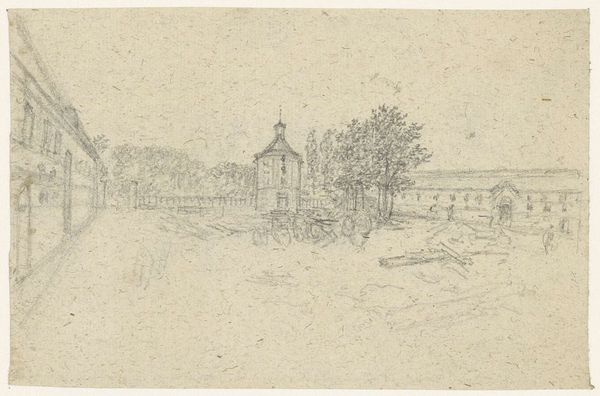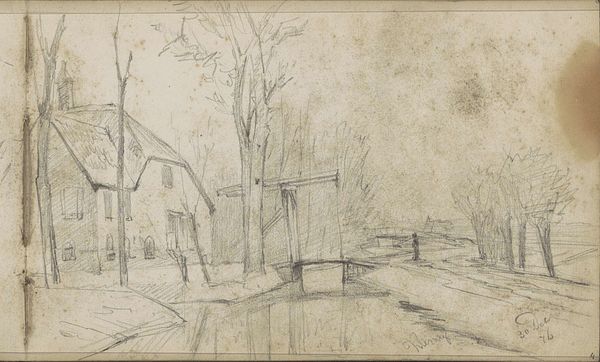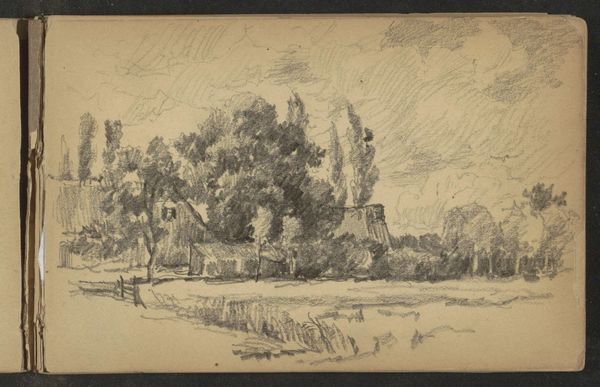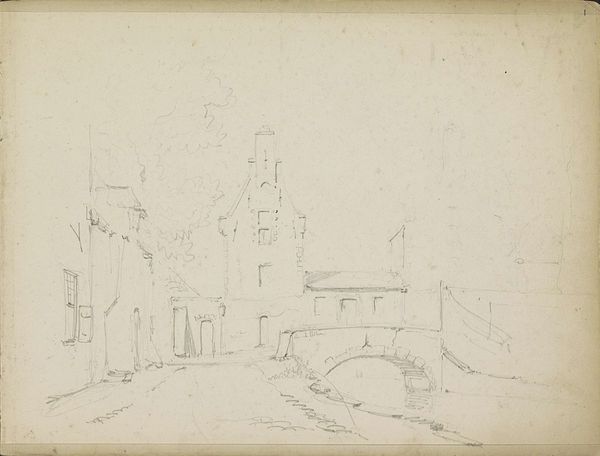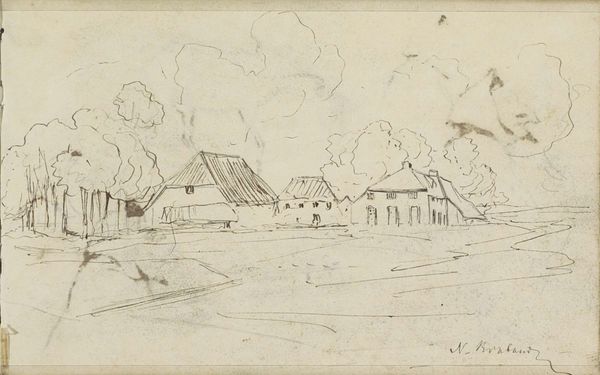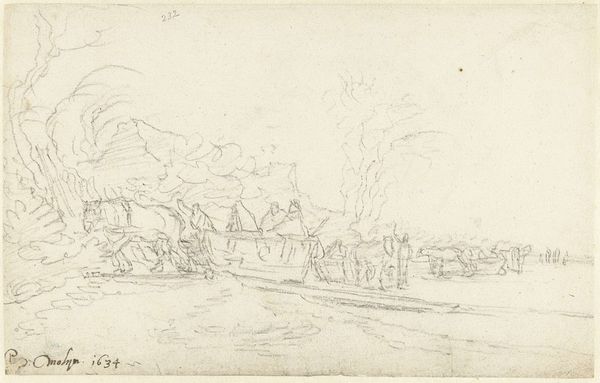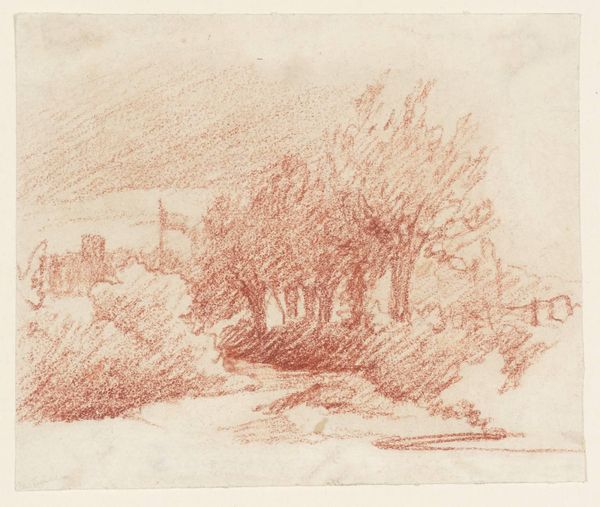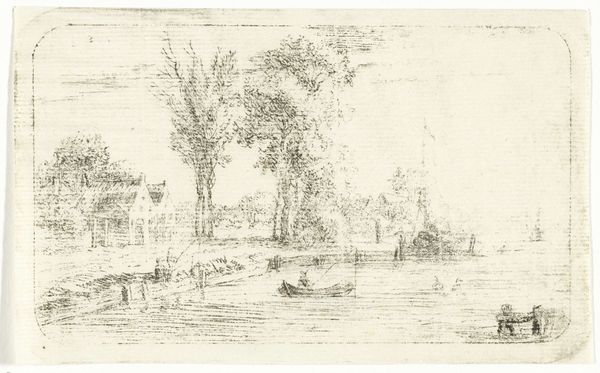
Dimensions: height 113 mm, width 159 mm
Copyright: Rijks Museum: Open Domain
Editor: This is "Landschap met molen" from 1896-1897, by Willem Cornelis Rip, a landscape drawn in pencil. It's such a simple sketch, yet it captures a feeling of openness and stillness. What catches your eye when you look at this? Curator: Immediately, the directness of the pencil strokes speaks volumes. Look how Rip uses this readily available material – pencil on paper – to depict not just the image of a landscape with a windmill, but also the very labor inherent in agrarian society at the turn of the century. It challenges the grand narratives of the time by showing work, the base of human experience and societal structures, in such a 'simple' sketch. Do you see the implications there? Editor: I think so... it's like he's making the act of observing and working in the landscape a single, unified action, refusing to separate art from the everyday. Curator: Precisely. It elevates what was previously considered craft – sketching, the initial process – to high art. Consider the accessibility of these materials, contrasting that with the often idealized representations of landscapes from the period that mask realities. What does the focus on these very accessible materials tell you about its potential audience? Editor: Well, if he’s choosing something as basic as pencil and paper, it could mean he was thinking about who could consume or even make art... perhaps making a statement about who has the means or permission to represent their world. It seems almost…democratic? Curator: Exactly. And this ‘democratic’ material application forces us to reconsider who gets to participate in the art world, and what constitutes "Art" with a capital "A" in the first place. That he focused on these humble and primary modes of material exploration of the physical location says something profound. Editor: It really makes you think about the choice of material, not just the finished picture, doesn’t it? Thanks. Curator: Indeed, and how that informs social and cultural hierarchies around art production and value.
Comments
No comments
Be the first to comment and join the conversation on the ultimate creative platform.

